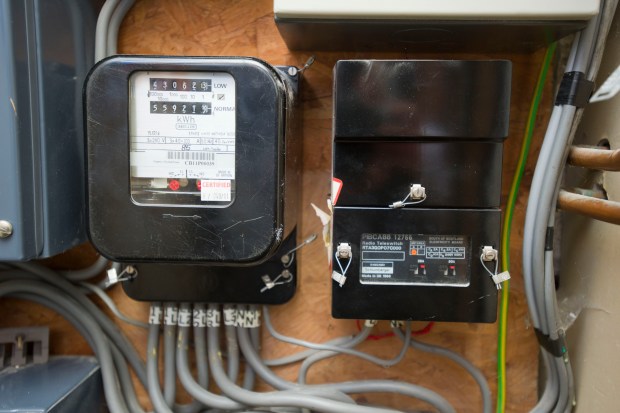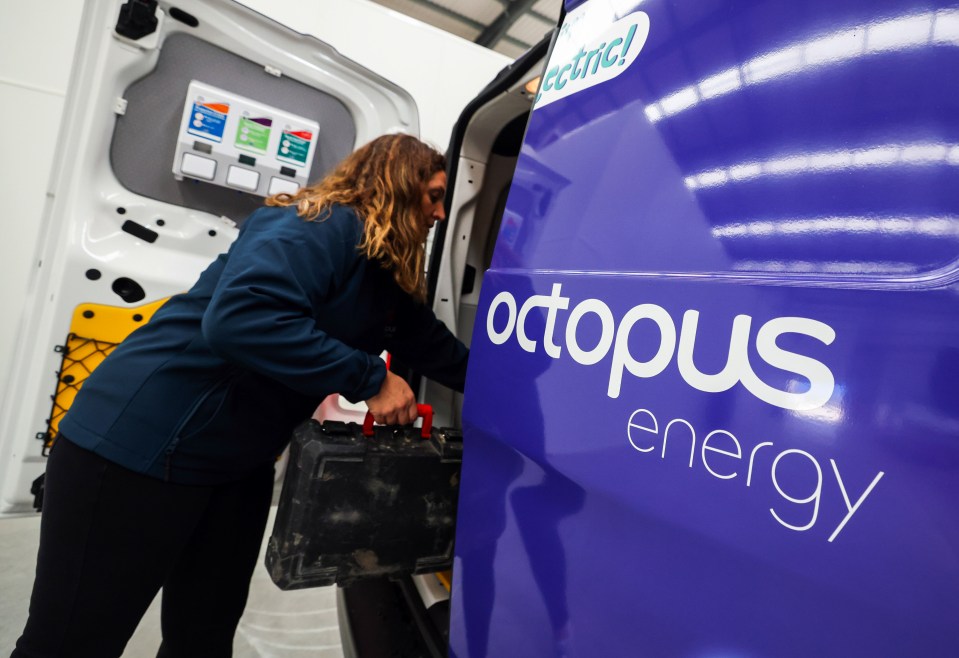THE UK’s largest energy supplier has issued a fresh warning to 41,000 customers ahead of a huge electricity meter switch off.
Households still using Radio Teleswitch Service (RTS) meters must upgrade to a smart electricity meter by the end of June to avoid being disconnected or trapped paying extortionate rates.
RTS-dependent electricity meters will stop functioning after June 30, 2025.
Octopus Energy, which previously managed approximately 60,000 RTS meters, has now revealed in an update to The Sun that around 41,000 meters still need to be replaced before the June deadline.
The company stated that roughly half of the affected customers have already booked an appointment to upgrade their meters.
However, this leaves approximately 20,500 households yet to take action.
Nearly one million customers relied on RTS meters before the planned switch-off was announced in 2023.
According to Ofgem’s most recent statistics, shared with suppliers, 415,000 meters across the industry still require replacement.
These meters were commonly used by customers on Economy 7 and other multi-rate tariffs, offering cheaper electricity rates depending on the time of day.
The devices rely on the RTS which broadcasts a signal alongside the long-wave channel for BBC Radio 4.
This signal is then picked up by the meter and used to switch the electricity rates at different times of the day.
Some RTS electricity meters can also automatically turn heating and hot water systems on and off during certain hours.
However, when the RTS signal is switched off these meters will no longer function as intended.
This means that from June, these meters could be left jammed on peak time electricity rates depending on when the RTS signal dies.
This could lead to huge bill hikes for households affected by the switch-off.
It could also leave those with heating systems controlled by RTS on or off permanently.
Suppliers have been racing to get their customers moved to smart meters before the deadline in recent weeks.
This week, Octopus Energy unveiled its ‘RTS Regional Tour’, aimed at ensuring remote customers can transition to smart meters on time, no matter their location.
As part of the initiative, the supplier’s engineers will visit areas such as Skye, Shetland, and Orkney later this month.
John Szymik, chief executive of Octopus Energy Services, said: “Octopus has boosted its service capability to offer fast-tracked assistance and ensure that no one is left without heating.
“Whether you live in a city or on a tiny island, our ‘RTS Regional Tour’ is about showing up for every customer and making sure they’re not left in the cold.
“Switching to a smart meter not only ensures continued heating and hot water access – especially for those using electricity for storage or panel heaters – but also unlocks a range of benefits, from smart tariffs and cheaper energy periods to better control over energy use”
Alongside warnings from Octopus Energy, over 65,000 E.ON Next customers are now being encouraged to step forward and arrange the installation of a smart meter.
Meanwhile, EDF has also issued warnings to 60,000 of its own customers, advising them to take the same action.
How do I know if I have an RTS electricity meter?

YOU’LL be able to tell if you have a meter that relies on the RTS quite easily.
The oldest RTS-powered meters have a switch box labelled “Radio Teleswitch” located next to the physical electricity meter.
Others may have the RTS switch box included within the electricity meter as a single box on the wall.
If you’re unsure about the type of electricity meter in your home – call your supplier as they’ll usually have this information on hand.
RTS is also sometimes called dynamically teleswitched (DTS).
What’s the alternative to RTS?
Smart meters offer the same features as RTS in that they can record the different prices at different times of day offered by Economy 7 tariffs.
They work using a digital signal and can also show your energy usage in real time, something many users find useful for reducing it and saving money.
Smart meters are being rolled out by suppliers across the country and around 36million households have one, though they are not without issues.
Around one in ten are thought to be “dumb” according to recent data from Ofgem.
Issues include a broken display and trouble connecting to the network in some areas, while many first-generation smart meters have outdated technology, though this is unlikely to be an issue with ones fitted now.
Suppliers should make efforts to fix smart meters that are not working, but you may have to make meter readings in the meantime to ensure accurate bills.
Monitors—the part of the smart meter that shows readings and usage—less than 12 months old should be replaced or fixed for free.
You can ask your supplier for a traditional meter instead, but as smart meters are replacing them, they are not obligated to give you one.
What is a smart meter?
SMART meters are gas and electricity meters that can digitally send readings to your energy supplier.
They show you how much energy you are using in pounds and pence, so can be used to help reduce your energy bill.
Unlike traditional meters, which simply register a running total of energy used, smart meters can record half-hourly price and consumption data and provide automatic meter readings to your energy supplier.
Most homes have two meters, one for gas and one for electricity – both will be replaced with smart meters.
You will also be offered an in-home display to show you the cost and amount of energy you are using at any given time
It will update every 30 minutes for gas and in near real-time for electricity.
Can I keep my RTS tariff?
Suppliers have been told by Ofgem that they must take reasonable steps to ensure they are on a like-for-like tariff after moving to a smart meter.
In some cases where this isn’t possible, they must work with the customer to agree an appropriate tariff.
There may be more smart meter-only tariffs available to some customers that could save them money.
If you haven’t been contacted by your supplier already, you don’t need to wait for a letter asking you to switch, you can contact them directly.
An Ofgem spokesperson said: “We expect suppliers to consider a range of innovative solutions to ensure their RTS customers get on to a metering and tariff arrangement appropriate for them.
“Smart meters are the best replacement for RTS meters – giving consumers more control of their energy usage and opening access to new money-saving tariffs – however, customers should speak to their supplier to understand the options that are available.”
